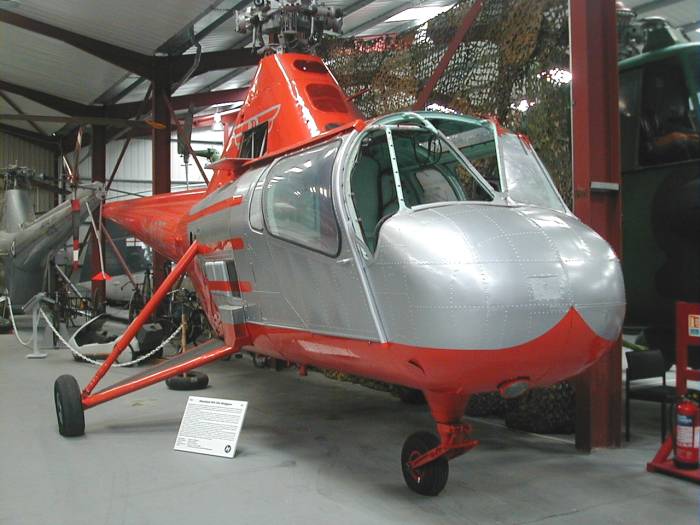Restoration of Westland WS.51A Widgeon, G-AOZE
Widgeon HistoryThe Widgeon, a 5-seat general purpose helicopter first flown in 1955, resulted from a major re-design of the WS-51 Dragonfly including an extended cabin and the choice of the more powerful 520hp Alvis Leonides 521/2 nine-cylinder radial piston engine. A new rotor head, evolved from that used on the WS-55 Whirlwind, was fitted. A total of 15 Widgeons were built by Westland at Yeovil, three of which were WS-51 conversions. |
|
Westland WS-51A Widgeon Series 2, G-AOZE/5N-ABW, a production machine, was built in Yeovil and first flew in July 1957. In 1960 it was bought by Bristow Helicopters, shipped to Bahrain (right) and used to service offshore oil drilling operations in the Persian Gulf, being fitted with pontoon floats in some locations. In 1962 it was transferred to Bristow's subsidiary in Nigeria, based at Port Harcourt, re-registered as 5N-ABW and allocated to Shell-BP for oil support work. After the Eastern State of Nigeria announced secession, in May 1967, oil production declined to such an extent that 5N-ABW was flown to the relative safety of one of the off-shore rigs before the Biafran Army could requisition it. When Bristows finally evacuated Port Harcourt in July 1967 three of Bristow's remaining Widgeons had to be left behind and two of these were eventually flown by the Biafran Air Force. Michael Draper's book "Shadows - Airlift and Airwar in Biafra and Nigeria 1967-1970" (Hikoki Publications 1999) gives a superb account of these and other aviation-related events during the conflict. |
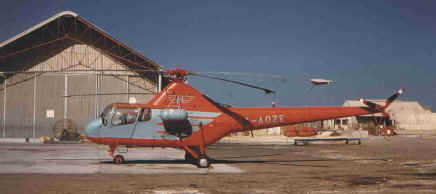 |
|
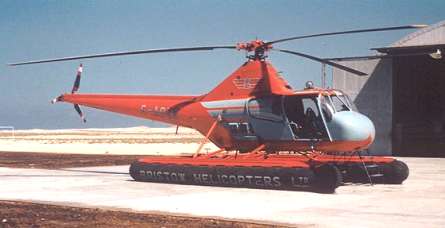 |
||
| Above right is Westland Widgeon, G-AOZE, operated by Bristow Helicopters Ltd, to service offshore oil-rigs in the Gulf and photographed at Das Island in 1958. Widgeons G-AOZE and G-AOZD were the first helicopters to be actually owned by Bristow. Thanks to Mr.A.J.Smith (Bristow 1957-74) for sending us the lower photograph, after visiting The Museum in 2005. | ||
|
In 1970 G-AOZE / 5N-ABW was returned to Bristow in Redhill, England, and donated to Warden Park School in Cuckfield, Sussex. The school rebuilt and renovated it but eventually had to sell the machine. It was acquired by Elfan ap Rees, Chairman of the Museum Trustees, joining the growing collection in Weston-super-Mare on 29th April 1986. Long-term restoration was started in 1994. |
||
Widgeon Restoration |
||
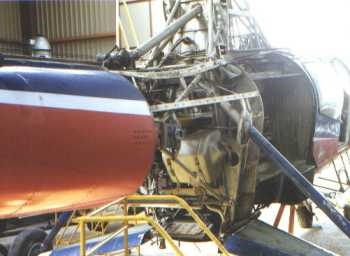 |
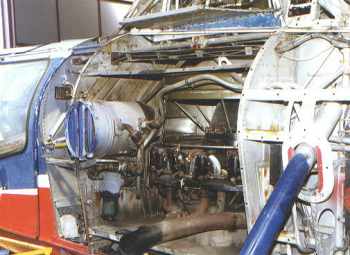 |
|
| In the newly-completed Restoration Hangar in 1994, for the start of restoration work, was G-AOZE after seven years outside, in a salt-laden atmosphere. | The large number of panels, held onto the centre section of the fuselage by Zsus fasteners, were soon removed and refurbishment commenced. | |
| Restoration of the Widgeon, which started in 1994, came to a full stop three years later. G-AOZE remained in the hangar and the project was resumed in 2001. It received a lot of special attention, between 2001 and 2003, from the team which made such a good job of the Wasp. | ||
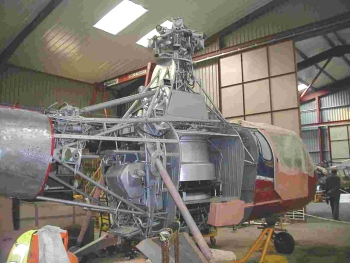
|
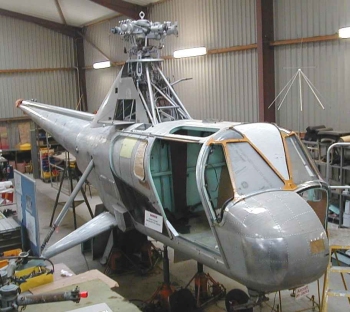
|
|
| Westland WS-51A Widgeon, G-AOZE/5N-ABW (above and right) in 2002, after many hours of cleaning and corrosion treatment, ready for external re-paneling. | ||
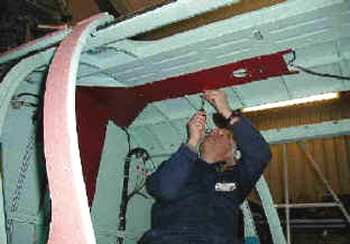 |
 |
|
| Mike Jarvis refits trim sections to the repainted cabin interior of the Widgeon on 5th January 2002. The completion of the cabin restoration continued, in the Display Hangar, into 2007. | On 1st December 2001 the Widgeon's instrument panel, found to be almost complete, was given a final clean and touches of new paint before re-installation in February 2002. | |
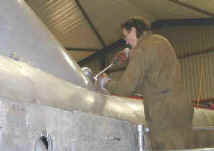 |
 |
|
| Above left:
John Blake replaces skin panels on the Widgeon on 9th February 2002. Most of the existing
fasteners were found to have been damaged by wear and corrosion, so needed replacement.
The panels themselves had to have small patches applied in some cases where tears and
punctures had occurred. Above right: On 11th May 2002 corroded rivets were removed from the Widgeon's tail boom and replaced by pins prior to repair. The extent of the rivet corrosion did not become apparent until all traces of old paint and primer had been removed |
||
 |
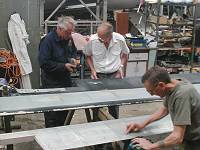 |
|
In May 2003 The Museum was invited to display the unfinished Widgeon at The Royal International Air Tattoo (RIAT), at RAF Fairford in July 2003, with Westland Whirlwind XR486, formerly of the Queen's Flight, the Bristol Sycamore, XG547, and the record-breaking Westland Lynx AH.1, G-LYNX. Making the Widgeon a lot more weatherproof became a priority
and the two cockpit roof glazing panels were re-fitted on 24th
May 2003. Seven days later work started on glazing the doors
and the multi-section windscreen (above left). On 21st
June the rotor blades were cleaned ready for painting (above
right) and more corroded rivets were replaced. G-AOZE was returned to The Museum on 19th August 2003 and was put on public display in the Main Hangar where the remaining restoration work was completed with the fitting of cabin seats in March 2006, with the exception of the windscreen glazing which, in 2017, continued to require attention. |
||
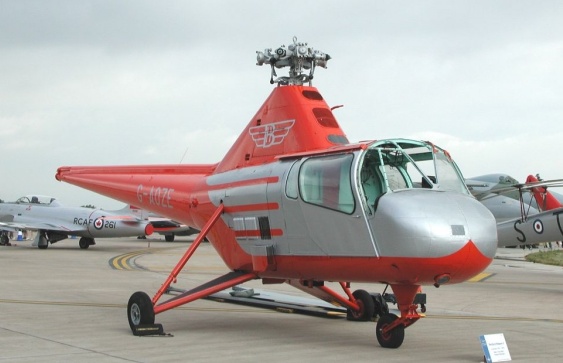 |
|
|
| Widgeon G-AOZE/5N-ABW was seen at RIAT Fairford in July 2003 (above left) and, after return to The Museum, was photographed on public display on 20th August 2003, (above right). | ||
